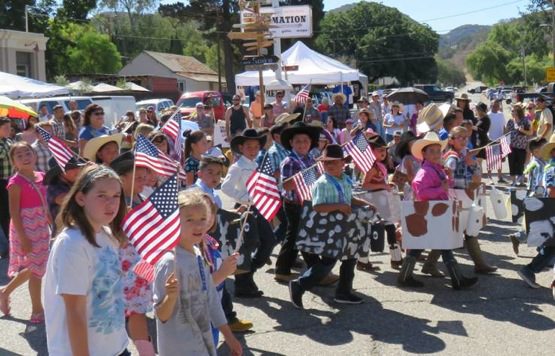Public vote needed before any annexation
Solvang City Council will soon consider annexation and possible new land uses for 17 parcels to the west on Highway 246, where hayfields are, and to the northeast on Alamo Pintado Road where there are now row crops and a pumpkin patch.
The first hearings on a sphere of influence/annexation report are Feb.5 for Solvang’s Planning Commission and Feb. 26 for the City Council.
Solvang would be almost 30 percent bigger if the 450 acres are annexed to its existing 1,550 acres. The 17 parcel owners were told there could be potential for retail, commercial, parkland and residential development on their land.
Solvang residents will have no vote on increasing the size of the city. Only council, LAFCO and the parcel owners will make the decision for Solvang’s 5,000 residents. A few hearings and three minutes each to make comments is not enough for this major decision; we need a vote.
Both the Valley Blueprint and the SVY Community Plan make preserving agricultural land and the rural character of the valley a priority. Many Solvang and Valley residents oppose annexation due to:
- traffic on Highway 246 in Solvang exceeding capacity with impatient bypass drivers endangering residential neighborhoods
- our already stressed water supply
- loss of prime ag land and greenbelts that protect our rural character
We will be carefully studying the report when it is released and attending hearings. We urge you to do the same.
Susan Belloni
Solvang
Annexation of land creates local control
Action such as a sphere of influence can protect a city from unwanted development that would be detrimental to the businesses and residents of the city. It puts control with the local jurisdiction and allows the city to protect its gateways and control impacts on its infrastructure.
Santa Barbara County is now in control of the parcels within this study. What happens in the future? The county is in dire financial condition. They have over a billion dollars in unfunded liabilities and around $300 million in deferred maintenance. One of these days this must be addressed, one way or the other.
One way is for the county to, in a sense, declare bankruptcy. The other would be to take a new philosophy and encourage development in order to raise taxes and fees.
As the population in the North County grows, the balance of power will move that direction — perhaps in 2020 or certainly in 2030, unless the South Coast has a change of heart and increases development significantly.
Many of the parcels in question are currently in the “Williamson Act” and produce little income to the county. It wouldn’t take much for a future county government to allow these parcels to go out and be developed in order to balance the books. The ideal place to take advantage of this would be parcels such as these that are adjacent to an urban area. Why would anyone want to have Santa Barbara, Santa Maria, Lompoc and Goleta make decisions on Solvang’s future?
There is also threat from within the valley. The community services district in Santa Ynez has identified one of the parcels on Alamo Pintado Road as a possible site for a future wastewater treatment plant. A sewer plant would be lovely next to Sunny Fields Park, wouldn’t it? Another site identified is east of the Duff Ranch next to the golf course.
Solvang needs a parallel economic driver for its tourism that will be fully compatible. The city is dependent on 1.5 million visitors to generate income to fund services enjoyed by its residents. We all saw what a two-week closure of Highway 101 did. Business was down significantly.
The flood clean-up was a relatively easy task as compared to what a major earthquake could potentially do. New roads and overpasses would take months. This second economy with higher-paying workforce would not necessitate an influx of visitors. The products or services could be sent out of the area to the customers.
By keeping the wage earners from commuting north or south for employment, there would be less commuting, less traffic and less tax leak to other communities.
And most importantly, the city and its residents would have complete say in what it would look like, how it would work and how it would create opportunities for younger families to remain at home.
Hans Duus
Former Solvang City Councilman
Santa Maria






